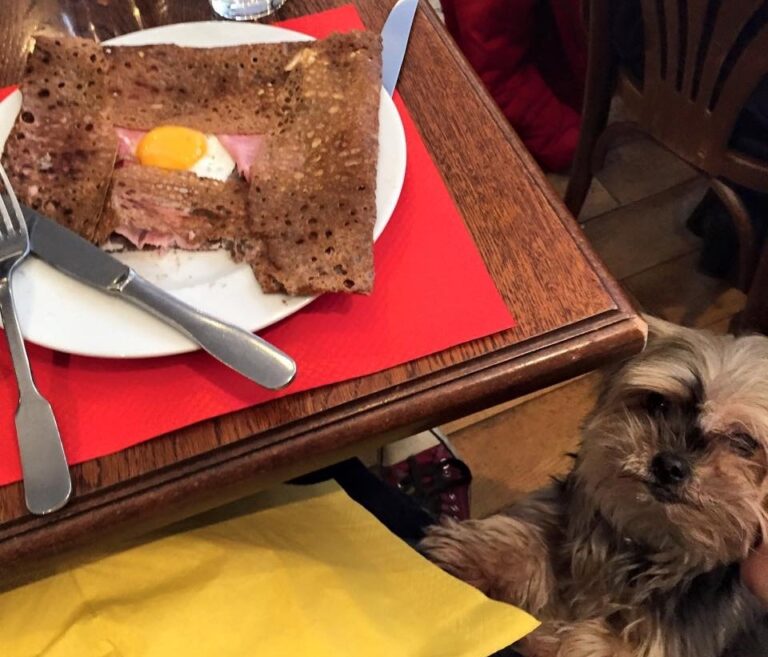Martha Stewart. Ina Garten. Gywenth Paltrow.
These are America’s lifestyle gurus, responsible for the googley-eyed gourds, DIY holiday wreathes, and homemade face scrubs present in the homes of millions of Americans. These American sweethearts are unshakeable super-humans, leaving us mortal women to shake our heads, muttering, “I can’t do that.”
Sarah Lavoine makes sure that you can do that. The French decorator, designer, lifestyle guru, mother of three, and now author stays down-to-earth, rejects design rules, and teaches happiness through simple yet beautiful decoration and living.
Low boots, worn blue jeans, gold knit sweater, and black Saint Laurent blazer, Lavoine oozes effortless-cool. She has the low voice and laugh of a smoker, and warm, observant eyes. “I love to dance, I love to drink,” she tells a captivated crowd at her book launch. Embracing technology and not spending more than twenty minutes laying a table setting, Lavoine goes against every trope of American lifestyle gurus.
The daughter of Vogue France director Jean Stanislas Poniatowski and decorator Sabine Marchal, Lavoine grew up in a very design-focused family. She attended acting school in New York, studied design under her mother, and started her own company in 2002. Recently, she redecorated the boutique Le Comptoir des Cotonniers, redid the interior of Le Roch Hotel & Spa, refurbished the Parisian restaurant l’Orient Extrême Montaigne, and opened the Elle Café Tokyo in Japan. “I’m proud of every project that I do. Each time it’s a new adventure and a new story to tell,” says a smiling Lavoine.
A recent point of pride in her life is her newly translated book, Chez Moi: Decorating Your Home and Living Like a Parisienne. Sarah Hamon, Lavoine’s PR person (and voice of praise for the modest Lavoine) notes that the book is quite revolutionary in France because lifestyle gurus (and their books) aren’t popular there. Lavoine and her book are the exception. Including recipes, tips for packing, decorating, de-cluttering, styling oneself, hosting, and more, “the book is fun, it’s not pretentious,” breezes Lavoine. “It’s like fresh air. It’s easy and beautiful living.”
Chez Moi depicts and teaches Lavoine’s “simple yet beautiful” design philosophy through pictures of her homes. Bold colors abound in her Paris apartment, and mingle together in a calming way. Accompanying the photos of her busy walls, Lavoine advises, “Use all kinds of objects: A child’s drawing, prettily framed, can hold its own against a work of primitive art. Tissue paper wrapping from an orange can be lovely. A set of postcards from a distant part of the world can enliven a section of wall.” Lavoine’s table-setting instructions don’t include diagrams for origami napkin swans or flower arrangements, yet the dinner table is just as beautiful. For meals, she advises using a pretty tablecloth, linen napkins (not matching), crystal glasses, white or colorful plates (not matching), silver cutlery, and small glasses of flowers. “No rules,” Lavoine declares sternly, then laughs.
Despite having written a book about Parisian style, Lavoine is refreshingly disinterested in bashing American-style decorating, or even stereotyping it. After some pressing, she confesses, “I think there’s more of a soul, you know, when [I] do an apartment.” According to Hamon, Americans relinquish full control to their interior designers, who tend to decorate apartments in a consistent style: “If it’s shabby chic, the whole thing is going to be shabby chic. You won’t have vintage pieces and contemporary pieces and shabby chic in the house, which is the total opposite of France.” A listening Lavoine adds, “We mix… I ask the people I work for to include the stuff they like on the walls—it’s not like décor, we want to feel it. … They have to put all of their personal stuff [like pictures, photographs, and artwork] up. Make it alive.”
Chez Moi covers Lavoine’s personal style: quick, simple, and comfortable. “You don’t have to be sophisticated to go out,” explains Lavoine. “Just put on a nice jacket and worn jeans.” Hamon adds, “[In America] you have to change when you want to go out. In Paris, you will never completely change your work outfit when you want to go out for a drink, you just have to change your—” “Shoes,” Lavoine finishes the sentence. The two women think on the same wavelength: “That’s the French way of doing things,” says Hamon. “You’re not going to do the whole make up thing—” “And the hair and stuff,” Lavoine adds, nodding. “If you have lipstick on, you won’t put anything on your eyes,” Hamon explains. “People here are just a little more formal, a little more sophisticated in the way that they get ready and prepared. [French women] are not that prepared.” “No,” Lavoine declares, then laughs.
Lavoine and her book never give commands. Does she have any design rules? “No, I don’t think so,” she muses. “I think people should be confident in themselves and do what they want to do. There’s no bad taste or bad choices. If you’re happy then it’s the best thing. It’s not that you shouldn’t do that, or you should do this. People should do what they want to do. And then [I] can help them, arrange some things. No rules.” Lavoine laughs again, seemingly aware of her paradoxical existence as the laid-back French lifestyle guru slash designer.
As for her three bits of design advice? “One: mix things. Add a soul. Give it a soul [by using] your grandmother’s table [and] a designer table. Two: lots of candles. Three: use color. Don’t be afraid of color.” Poised, keen, and real, we can’t all live as simply stylishly as Lavoine, but with Chez Moi we’re a hell of a lot closer than we’ll ever be with GOOP’s annual wishlist.
Chez Moi: Decorating Your Home and Living Like a Parisienne is available for purchase here.









